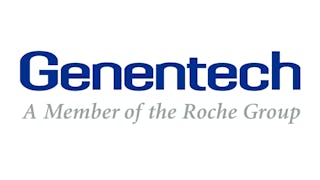This course is aimed to demonstate how principles and methods from data science can be applied in clinical reporting.

Enjoy unlimited growth with a year of Coursera Plus for $199 (regularly $399). Save now.

Making Data Science Work for Clinical Reporting



Instructors: Dinakar Kulkarni
2,421 already enrolled
Included with
(11 reviews)
Recommended experience
Skills you'll gain
Details to know

Add to your LinkedIn profile
See how employees at top companies are mastering in-demand skills

There are 7 modules in this course
In this module we will introduce this course. We will provide context on clinical reporting in general, describing how clinical trials work at a high level, as well as providing resources to learn more. We will then focus on motivating the course, describing the benefits of applying data science in the context of clinical reporting
What's included
4 videos1 reading1 assignment
In this module we explore how data scientists are able to share their work confidently with the right people. We will look at important concepts related to data and results sharing, quality assurance and data access restrictions.
What's included
23 videos2 readings1 assignment
In this module we explore how to make the most out of data science by developing the best mindset.
What's included
9 videos1 reading1 quiz1 assignment1 discussion prompt
In this module we introduce the idea of version control, and git in particular. We show how you can use git effectively to manage your code during clinical reporting, and how it can be used as a tool for collaboration. We also look at making an R project in particular reproducible
What's included
18 videos1 reading1 assignment
In this module we will discuss benefits of InnerSourcing, OpenSourcing and developing our own R packages. We will review some of the core principles and tools of R package development. Finally, we will learn how to set up a CI/CD workflow for R package development.
What's included
16 videos3 readings1 assignment1 ungraded lab
In this module we will review the tools and approaches used to understand risk in a codebase used to derive datasets and insights. By the completion of this module you will get some hands on experience applying these principles against a specific open source library.
What's included
5 videos1 assignment1 peer review
In this final module we will briefly review the course, and suggest next steps in your learning journey
What's included
1 video
Instructors



Offered by
Explore more from Data Analysis
 Status: Free Trial
Status: Free TrialUniversity of Colorado System
 Status: Preview
Status: PreviewGenentech
 Status: Free Trial
Status: Free TrialUniversity of Colorado System
Why people choose Coursera for their career




Learner reviews
11 reviews
- 5 stars
72.72%
- 4 stars
0%
- 3 stars
9.09%
- 2 stars
0%
- 1 star
18.18%
Showing 3 of 11
Reviewed on Feb 15, 2023
Great course. It would be nice to have a course certificate upon completion.
Reviewed on Mar 5, 2023
The course itself its ok, but if you do not receive a peer grade for the final assigment you can not get the certification, so the completition is out of the stndent´s hands

Open new doors with Coursera Plus
Unlimited access to 10,000+ world-class courses, hands-on projects, and job-ready certificate programs - all included in your subscription
Advance your career with an online degree
Earn a degree from world-class universities - 100% online
Join over 3,400 global companies that choose Coursera for Business
Upskill your employees to excel in the digital economy
Frequently asked questions
To access the course materials, assignments and to earn a Certificate, you will need to purchase the Certificate experience when you enroll in a course. You can try a Free Trial instead, or apply for Financial Aid. The course may offer 'Full Course, No Certificate' instead. This option lets you see all course materials, submit required assessments, and get a final grade. This also means that you will not be able to purchase a Certificate experience.
When you purchase a Certificate you get access to all course materials, including graded assignments. Upon completing the course, your electronic Certificate will be added to your Accomplishments page - from there, you can print your Certificate or add it to your LinkedIn profile.
Yes. In select learning programs, you can apply for financial aid or a scholarship if you can’t afford the enrollment fee. If fin aid or scholarship is available for your learning program selection, you’ll find a link to apply on the description page.
More questions
Financial aid available,
¹ Some assignments in this course are AI-graded. For these assignments, your data will be used in accordance with Coursera's Privacy Notice.





